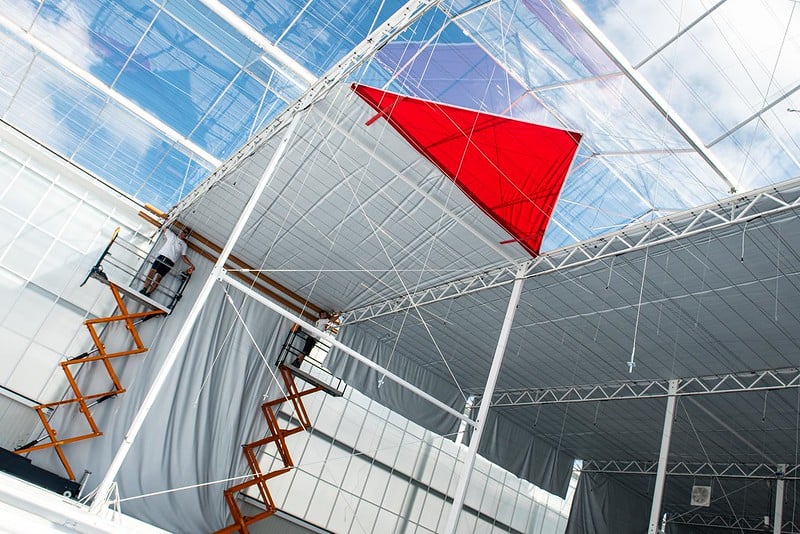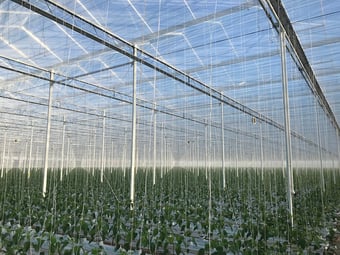Light transmission of dirty screens
Regular maintenance is crucial to prolong the lifespan of your screens for as long as possible. However, like all good things, climate screens do not last forever. Various factors in the greenhouse environment can influence the performance of the screen material and degrade the material over time. This can affect the light transmission of the climate screens; while it depends on the type of screen, location, crop, and how they are used, you can generally speak of a 1 % decrease in transmission per year.
The decreasing light transmission will influence the performance of the screen material; less light transmission will result in lower light levels in the greenhouse, and thus the crop growth can be affected.
When to replace a screen
Reduced light transmission because of dirt and aged screen materials is one of the main reasons for growers to replace their climate screens after a certain period. Some growers attach great value to light and production, and it is not uncommon for them to replace an energy-saving screen every 5 to 6 years. At this point, the benefit of the light transmission that they gain from a new screen is greater than the investment in the new installation.
Another reason that adds weight to the decision to replace a screen is the energy-saving benefits of a new installation. Over time, the texture of an energy-saving screen can become more open because of wear and tear, which decreases the insulation factor. As an example, a new energy screen saves up to 3m³ of natural gas per m² extra compared to an energy screen of 4-5 years old. The choice to replace a screen therefore also can be influenced by (high) energy prices. As energy prices are on the rise, it becomes more attractive to replace a screen system with new fabric.
Performance audit
In a previous blog, we explained how prevention and regular maintenance will benefit the lifespan of your installation. However, when the performance of a screen is below standard, you might need to perform an analysis of the light transmission of the screen. As a grower, you can tell when it is time to replace a screen by keeping a close eye on your greenhouse computers and looking for irregularities or trends that can be a result of the performance of your screen. An installer can help you to perform an audit on your installation and perhaps measure the light transmission levels on the installation with special equipment.
Check-up on mechanical parts
Once you decide to replace the screen fabric in your screen system, remember to consult with your installer to replace the insulating strips at the sides of the greenhouse. This is very important because it is where most energy loss occurs from a greenhouse. After all, the strips connect the sides of the screen with the greenhouse construction.
When retrofitting your screen system with a new screen fabric, you might also want to have a check-up on all wires, bearings, and perhaps other mechanical and electromechanical parts of the drive system. Be sure that these may also need replacing or calibration, so the whole system is in sync and works effectively together to achieve high performance. In this way, growers can reassure themselves that the new screen will remain in use for another seven or eight years.
Expert advise on climate screens
A specialist crop adviser and a screen installer can advise you on what type of climate screen to install and how best to install it, and what other equipment might need to be replaced at the same time. When a change of or new screens is needed sooner rather than later, Ridder has a large stock of climate screens and can deliver quickly.
Download the Ridder climate screens product sheet to find out about the best type of screens for your crop.




